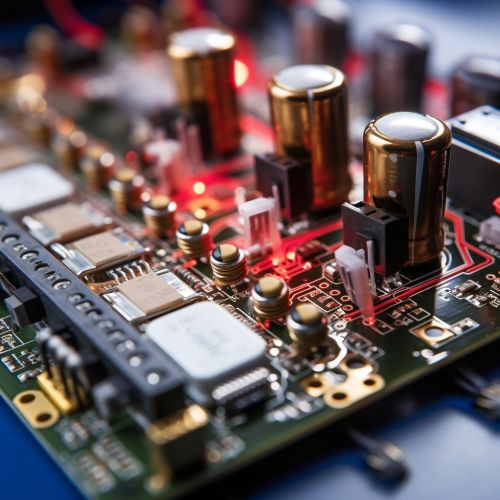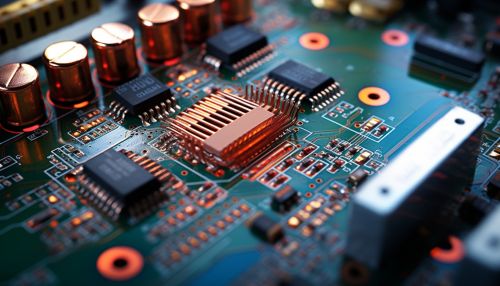Analog Circuit Design
Introduction
Analog circuit design involves the creation of electronic circuits that process analog signals. Analog signals are continuous in nature and can take any value within a certain range. The design of these circuits involves the use of operational amplifiers, resistors, capacitors, inductors, and other passive and active components.


Basic Components of Analog Circuits
Analog circuits are built using basic electronic components. These include:
- Resistors: These are passive components that resist the flow of electric current. They are used in analog circuits to control the amount of current that flows through different parts of the circuit.
- Capacitors: These are components that store electrical energy in an electric field. In analog circuits, they are used for a variety of purposes, such as filtering and coupling.
- Inductors: These are components that store energy in a magnetic field. They are used in analog circuits for applications such as filtering and tuning.
- Operational Amplifiers: These are active components that amplify the input signal. They are used in analog circuits for a wide range of applications, including amplification, filtering, and signal processing.
Analog Circuit Design Process
The design process of an analog circuit involves several steps. These include:
- Specification Definition: This is the initial stage where the requirements of the circuit are defined. This includes the functional requirements, performance requirements, and physical constraints.
- Circuit Topology Selection: In this stage, the basic structure of the circuit is chosen. This involves selecting the types of components to be used and their arrangement in the circuit.
- Component Value Selection: Once the circuit topology has been chosen, the next step is to select the values of the components. This involves calculations and simulations to ensure that the circuit will perform as required.
- Simulation and Verification: After the component values have been selected, the circuit is simulated to verify its performance. This involves the use of computer-aided design (CAD) tools.
- Prototype Construction and Testing: Once the circuit has been verified through simulation, a prototype is constructed and tested. This allows for any necessary adjustments to be made before the final circuit is built.
Types of Analog Circuits
There are several types of analog circuits, each with its own specific applications. These include:
- Amplifiers: These are circuits that increase the amplitude of an input signal. They are used in a wide range of applications, including audio systems, radio transmission, and signal processing.
- Filters: These are circuits that allow certain frequencies to pass while blocking others. They are used in applications such as audio processing, radio transmission, and signal conditioning.
- Oscillators: These are circuits that generate a continuous output signal without an input signal. They are used in applications such as signal generation, clock generation, and frequency synthesis.
- Mixers: These are circuits that combine two or more input signals to produce an output signal. They are used in applications such as radio transmission, signal processing, and frequency synthesis.
Challenges in Analog Circuit Design
Designing analog circuits presents several challenges. These include:
- Component Tolerances: The values of electronic components can vary from their nominal values due to manufacturing tolerances. This can affect the performance of the circuit.
- Temperature Effects: The performance of electronic components can be affected by changes in temperature. This can cause the circuit to behave differently under different temperature conditions.
- Noise: Noise is an unwanted signal that can interfere with the desired signal. It can be introduced into the circuit through various sources, such as thermal noise, shot noise, and flicker noise.
- Nonlinearity: Nonlinearity is a property of some electronic components where the output is not directly proportional to the input. This can cause distortion in the output signal.
Conclusion
Analog circuit design is a complex and challenging field that requires a deep understanding of electronic components and circuit theory. Despite the challenges, it is a vital part of many electronic systems and continues to be an active area of research and development.
